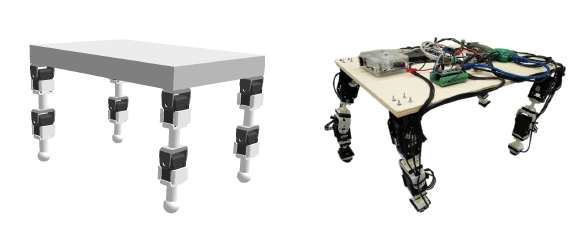Abstract
Animals exhibit astonishing capabilities in terms of locomotion control which Science aims at understanding and reproducing in robots. The ability to adapt movements based on morphological changes is specially interesting in the field of reconfigurable robotics. It is commonly accepted that two components play an important role in the way animals perform control: Central Pattern Generators and Reflex Mechanisms. Respectively, two bio-inspired control strategies were studied under the scope of this work, an optimized open loop CPG network, and a closed loop decentralized control of the limbs by Tegotae feedback rules. A quadruped robotic platform was chosen for the study, being modelled in Webots simulator, where optimization and search algorithms were employed, and implemented on hardware, where validation experiments took place. The focus of this project was on analyzing performance of imposed gaits, with the first strategy, comparing it with emergent gaits from the decentralized approach. This comparison proved that Tegotae-based control is able not just to drive the system towards a stable steady state limit cycle behaviour, as it does so for a near optimal one. Several gaits found in nature were reproduced with a simple trajectory parametrization method, indicating energetic cost and mechanical stability of these. Tegotae-based control was thoroughly analyzed, and some improvements are proposed, namely scaling with frequency and variable attraction coefficient. Binary feedback was also put at proof for the first time, showing feasibility but some performance loss. Diverse software and hardware tools were developed for use in future work.

Files